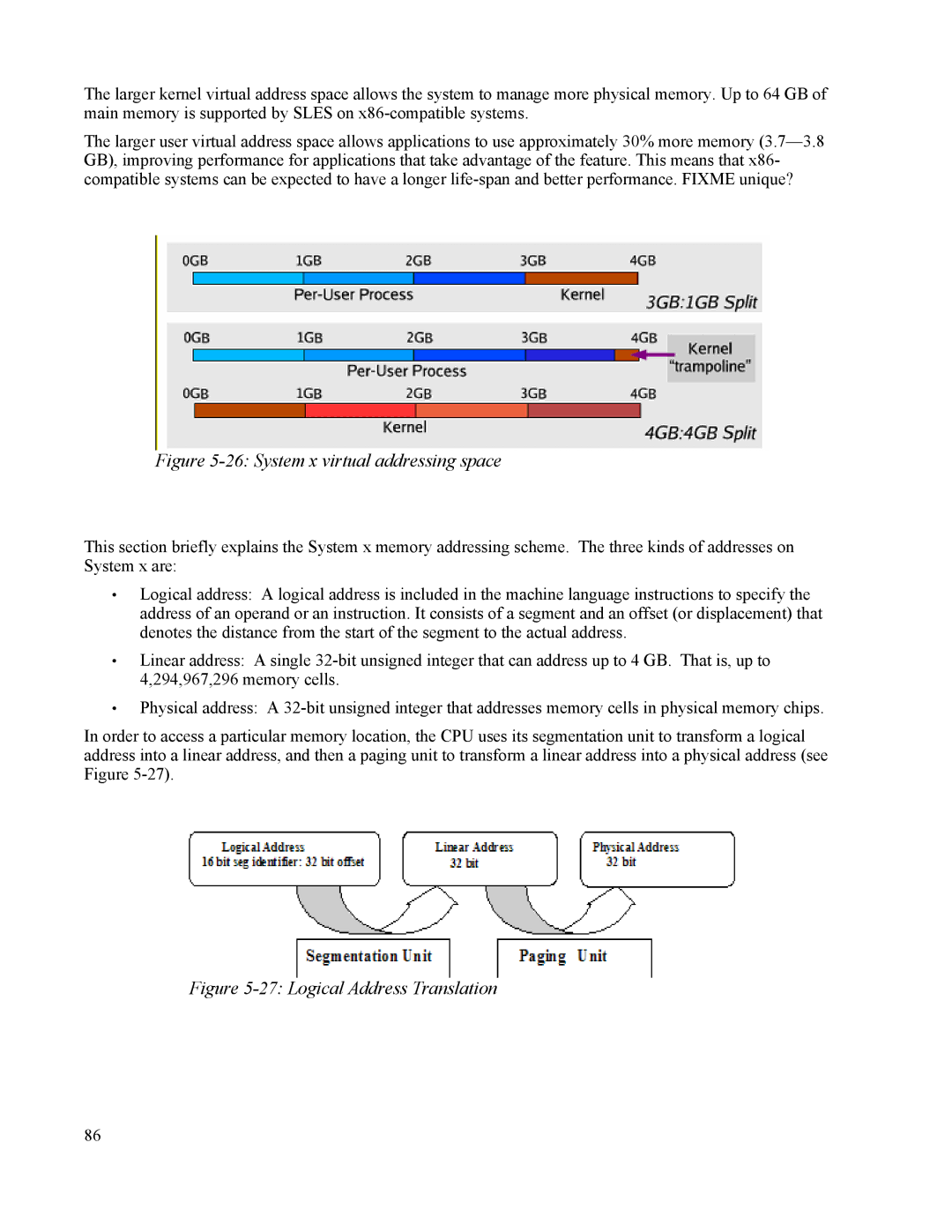
The larger kernel virtual address space allows the system to manage more physical memory. Up to 64 GB of main memory is supported by SLES on
The larger user virtual address space allows applications to use approximately 30% more memory
Figure 5-26: System x virtual addressing space
This section briefly explains the System x memory addressing scheme. The three kinds of addresses on System x are:
•Logical address: A logical address is included in the machine language instructions to specify the address of an operand or an instruction. It consists of a segment and an offset (or displacement) that denotes the distance from the start of the segment to the actual address.
•Linear address: A single
•Physical address: A
In order to access a particular memory location, the CPU uses its segmentation unit to transform a logical address into a linear address, and then a paging unit to transform a linear address into a physical address (see Figure
Figure 5-27: Logical Address Translation
86
